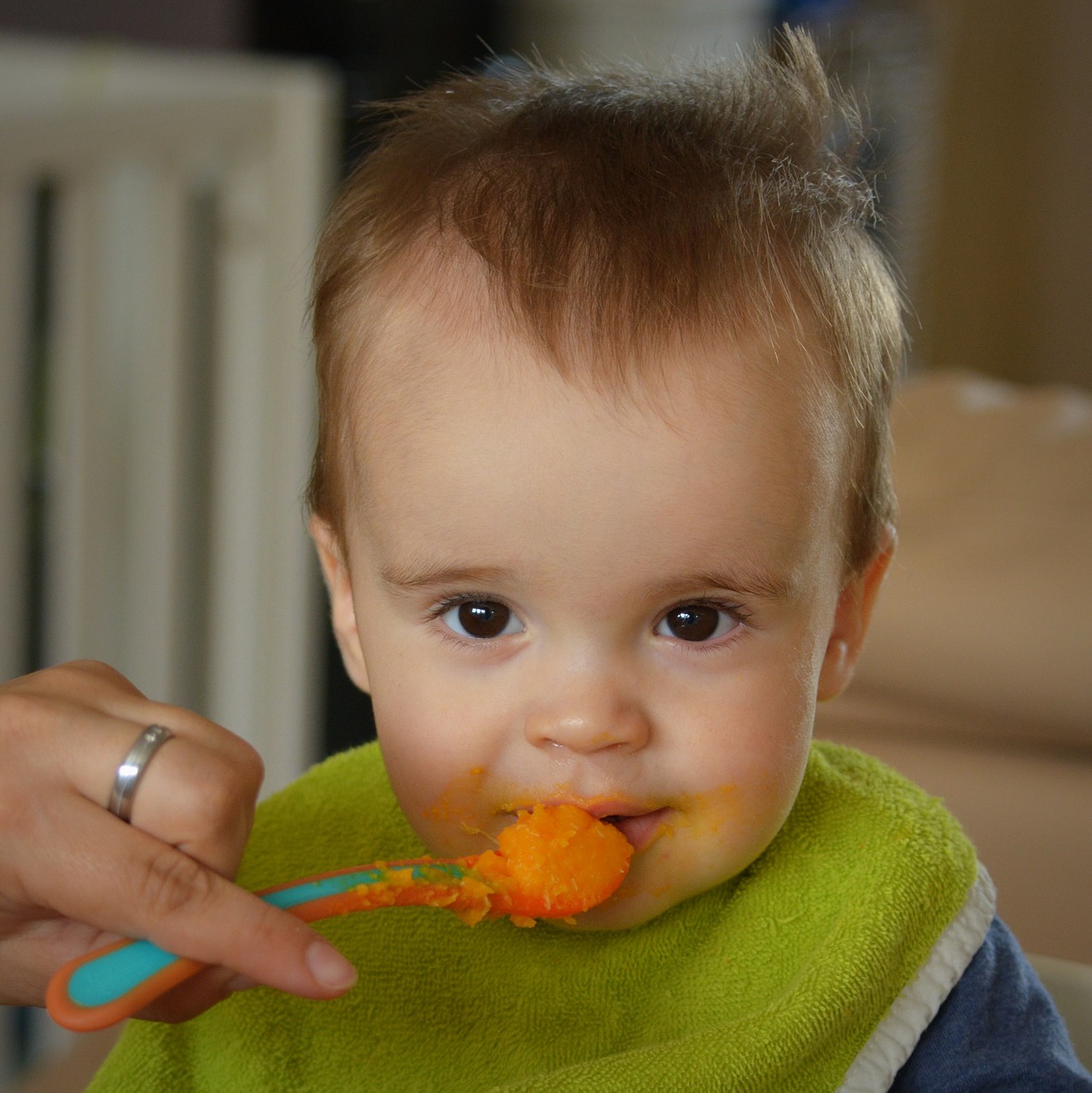Is your baby ready to start solids? Congratulations! Your little one is growing up so quickly. This is cause for celebration, and many Indian communities even mark the occasion with an Annaprashan or feeding ceremony. It’s exciting to watch your baby all dressed up in beautiful, ethnic clothes and lovingly fed rice cereal while family members click enough memories to last. That is the fun part. Now comes the tougher bit. Getting your little one to actually eat. While breastmilk is considered a complete meal for kids up to six months, they need something more substantial and nutritious after that age.
Unlike walking or crawling, this milestone doesn’t come as naturally as one would’ve liked. But as a parent, you can equip yourself with the tools to carry out a successful feeding. To introduce your child to solid food, you can opt between a traditional weaning or baby-led weaning method.
The traditional method is one which has been carried out over several generations of mothers. It’s tried and tested. It’s also received very few complaints. If you’re curious about this technique, check out our traditional weaning guide. Have a look and see if it’s right for you.
What is traditional weaning?
The introduction of traditional weaning foods like dal soup, mashed rice and vegetable purees into your six-month-old baby’s diet, which is also supplemented with breast milk or formula. The parent makes the child sit upright on the floor or in a feeding chair. Using a small chamaach and vati, food is slowly fed to the baby. Gradually, they move on to textured, unmashed food.
Some traditional weaning baby foods are:
- Pureed veggies like carrots, pumpkin, beetroot, cauliflower, etc.
- Mashed fruits like banana, apple, chickoo, etc.
- Rice cereal
- Homemade cerelac
- Dal khichdi
For recipes and more details on what to feed your baby, check out this cookbook.
Myths surrounding traditional weaning
Babies shouldn’t eat spices
Only if you mean chilli and other heat-inducing spices. Otherwise, you can always use a tiny pinch of haldi, jeera powder, ajwain and other milder spices. Not only do they add more flavour to the food, but they also aid in digestion and reduce gas. (But no salt or sugar till one year.)
Babies should start with fluids
Don’t put your child on a liquid diet, please. It’s important the food contains some texture and retains all its fibre. Pulpy food helps your baby to learn to chew better. This, in turn, helps to release saliva and kickstart the digestion process.
Babies need teeth to eat
Not if you’re feeding them pureed, mashed or soft foods that quickly dissolve in the mouth. Also, by six months, babies have strong jaws that can help them chew soft food quite efficiently.
Pros of following the traditional method
- Babies who don’t have teeth can chew soft, mashed food quite easily, especially many Indian dishes like dal soup, mushy khichdi, etc.
- It’s a safe method with low chances of choking, as the food is soft and easily dissolves in the mouth.
- The parent can keep track of what food the baby likes.
- It’s a less messy affair than baby-led weaning since you’re in charge of feeding and the baby usually doesn’t have any physical control over the food fed to him.
- You know exactly what your baby’s intake quantity is, especially when you’re offering iron and zinc-rich food. You know how much of these vital nutrients are going into the mouth, as opposed to the floor.
- If your baby responds well, you can adopt an accelerated traditional weaning approach, and introduce finger foods and firmer solids sooner with five to eight weeks.
- It’s also easier if you have to feed the baby outside the house as you are in charge of the feeding process.
- If your baby resists the changes in his diet, you can always add a bit of breastmilk to the mushy food, so that the flavours are familiar to your baby.
Cons of following the traditional weaning method
- It can be quite a time consuming, at least for the initial few months as you are slowly spoon-feeding your baby.
- During the first few feeds, there may be a struggle between the feeder and the baby, as both are still new to the whole process. Since the baby is introduced to new textures and flavours for the first time, he might take longer to chew food. As a parent, this can get quite frustrating and could lead to force-feeding.
- It might take you several trials before you figure out what your baby’s preferences are in terms of taste and texture.
- If your baby doesn’t like the food, and there is no other option available, he can kick up a bit of fuss.
- The lack of choice or control in the feeding might also hamper the baby’s desire to eat more. Kids are tactile by nature and love to touch things. Being spoon-fed involuntarily might not appeal to all babies.
Conclusion
If you choose to go down the path of the traditional method, you need to be prepared and organise yourself. Create a weekly menu so you know what your child has eaten, and can offer some variety. Your baby may take some time to adapt to the new feeding routine, but rest assured, once he gets the hang of it, he will be happily gobbling up his dinner.






Leave A Comment